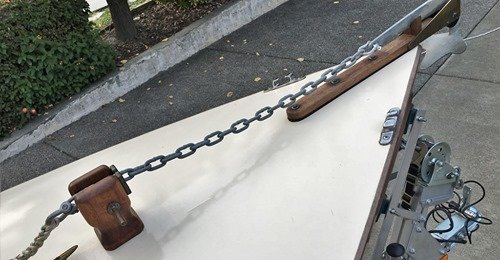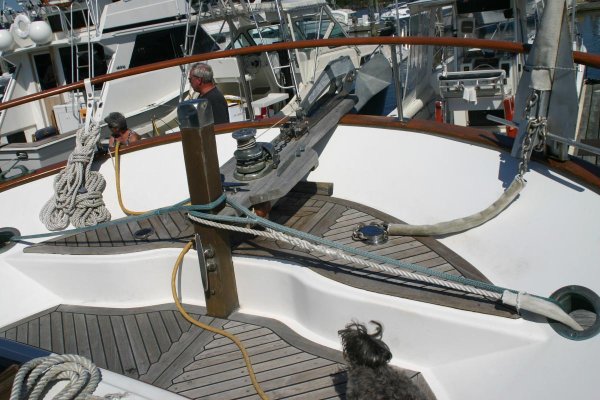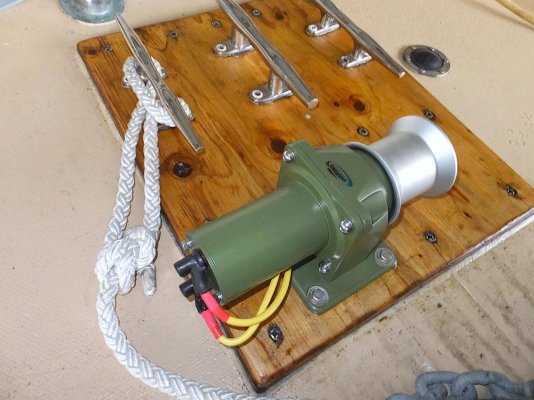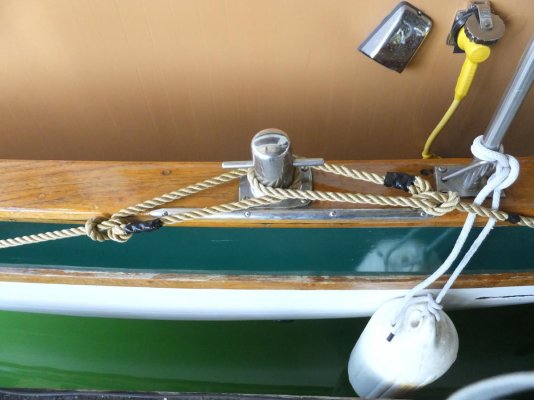Nomad Willy
Guru
Found this on FB on a small boat from ??
He felt it’s much more secure than a cleat.
But I’m thinking the Sampson Post is only as secure as what it’s attached to and how it’s attached. The post usually is stout especially if longer than the thickness of the deck and attached to the stem or other member tied into other basic structure.
As for the upper post it should be attached to the deck (of course) but there should be a beam like a house rafter that transfers much/most of the load to the gunwales and structural members there. And the stem high.
But it’s cute and interesting how the skipper used the S post to mount the chain stopper.
He felt it’s much more secure than a cleat.
But I’m thinking the Sampson Post is only as secure as what it’s attached to and how it’s attached. The post usually is stout especially if longer than the thickness of the deck and attached to the stem or other member tied into other basic structure.
As for the upper post it should be attached to the deck (of course) but there should be a beam like a house rafter that transfers much/most of the load to the gunwales and structural members there. And the stem high.
But it’s cute and interesting how the skipper used the S post to mount the chain stopper.






